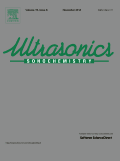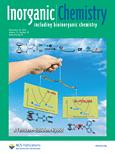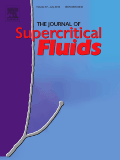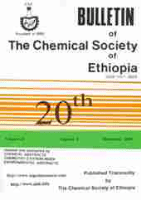
ULTRASONICS SONOCHEMISTRY
Scope & Guideline
Fostering Collaboration and Innovation in Sonochemistry Research.
Introduction
Aims and Scopes
- Ultrasound-Assisted Extraction and Processing:
Focusing on methodologies that employ ultrasound to enhance the extraction and processing of bioactive compounds from natural sources, improving yield and efficiency while maintaining quality. - Sonochemical Reactions and Mechanisms:
Exploring the mechanisms and kinetics of chemical reactions facilitated by ultrasound, including radical generation and the effects of cavitation on reaction pathways. - Cavitation Dynamics and Applications:
Investigating the behavior of bubbles in ultrasonic fields and their applications in fields such as biomedical, food processing, and materials synthesis. - Environmental Applications of Ultrasonics:
Researching the use of ultrasonic technologies for environmental remediation, including wastewater treatment and pollutant degradation. - Nanomaterials Synthesis and Modification:
Focusing on the ultrasonic synthesis of nanomaterials and their functionalization for applications in catalysis, drug delivery, and energy storage. - Ultrasound in Food Technology:
Examining the role of ultrasound in food processing, preservation, and safety, with a focus on enhancing quality and nutritional profiles.
Trending and Emerging
- Integration of Ultrasound with Other Technologies:
There is a growing trend towards combining ultrasound with other advanced technologies, such as microwave, electrochemical, and photochemical methods, to enhance processing efficiency and product quality. - Sustainable and Green Chemistry:
An increasing emphasis on environmentally friendly practices, including the use of deep eutectic solvents and other green extraction methods, aligns with global sustainability goals. - Biomedical Applications of Ultrasonics:
Research exploring the use of ultrasound in medical applications, including drug delivery systems and cancer treatment via sonodynamic therapy, is rapidly emerging as a significant focus area. - Nanotechnology and Advanced Materials:
The development and application of nanomaterials synthesized or modified using ultrasonic techniques are trending, particularly in catalysis, drug delivery, and environmental remediation. - Food Safety and Preservation Techniques:
Research on the application of ultrasound in food safety, preservation, and enhancement of nutritional quality is gaining momentum, reflecting the increasing interest in food technology. - Cavitation Phenomena in Complex Fluids:
Studies investigating the dynamics of cavitation in complex fluids, including biological and food matrices, are increasingly prevalent, highlighting the intricate interactions within these systems.
Declining or Waning
- Traditional Chemical Processing Methods:
There is a notable decrease in studies focused solely on conventional chemical processing methods without the integration of ultrasound, as the field moves towards more innovative, hybrid approaches. - Basic Theoretical Studies without Practical Applications:
Research that emphasizes theoretical models or simulations without a clear application or experimental validation is becoming less common, as the journal increasingly favors studies with practical implications. - Limited Scope in Purely Mechanical Applications:
Papers focusing exclusively on mechanical applications of ultrasound, such as basic cleaning or surface treatment, have declined, with more emphasis now placed on integrated approaches that combine multiple techniques. - Overemphasis on Low-Intensity Ultrasound:
Research centered on the effects of low-intensity ultrasound alone is waning, as the focus shifts towards high-intensity applications that demonstrate more significant effects and applications.
Similar Journals

INORGANIC CHEMISTRY
Unveiling the Complexities of Inorganic MaterialsInorganic Chemistry, published by the American Chemical Society, stands at the forefront of the field of inorganic and physical chemistry, boasting an impressive impact in the academic community with a 2023 classification in the Q1 quartile across multiple categories including Inorganic Chemistry and Miscellaneous Chemistry. Since its inception in 1962, this esteemed journal has been a crucial platform for disseminating groundbreaking research, innovative methodologies, and comprehensive reviews integral to understanding the complex behaviors of inorganic materials. With a ranking of #12 out of 79 in Inorganic Chemistry and #37 out of 189 in Physical and Theoretical Chemistry according to Scopus metrics, Inorganic Chemistry has established itself as a premier destination for researchers, professionals, and students alike, eager to stay abreast of pivotal developments and trends in the discipline. Despite being a subscription-based journal, its esteemed reputation and critical contributions make it essential for anyone engaged in the exploration of inorganic chemical phenomena. As it prepares to converge into a new era by 2024, the journal continues to embody excellence and innovation, fostering a dynamic exchange of ideas essential for advancing this vibrant area of science.

Izvestiya Vysshikh Uchebnykh Zavedenii Khimiya i Khimicheskaya Tekhnologiya
Elevating Standards in Chemical Engineering ScholarshipIzvestiya Vysshikh Uchebnykh Zavedenii Khimiya i Khimicheskaya Tekhnologiya is a prominent academic journal dedicated to the fields of chemistry and chemical technology, published by the esteemed IVANOVSKOGO KHIMIKO-TEKHNOLOGI TSHESKOGO INST in the Russian Federation. With an ISSN of 0579-2991 and E-ISSN of 2500-3070, this journal has been a crucial platform since its inception in 1980, showcasing significant advancements and research findings, particularly in its converged periods from 1980, 1982, and 2017 to 2024. The journal is ranked Q3 in Chemical Engineering and Chemistry, reflecting its dedication to quality scholarship. Although open access options are currently unavailable, the journal plays a vital role in disseminating knowledge and fostering collaboration among researchers, professionals, and students in these critical scientific domains. Situated in Ivanovo, Russia, it continues to be a focal point for impactful research, making it an essential resource for those aiming to stay at the forefront of innovation in chemistry and chemical engineering.

CHEMICAL RESEARCH IN CHINESE UNIVERSITIES
Pioneering Discoveries in Chemistry EducationCHEMICAL RESEARCH IN CHINESE UNIVERSITIES is a prominent academic journal dedicated to the dissemination of high-quality research in the field of chemistry and related educational methodologies. Published by HIGHER EDUCATION PRESS, this journal has established itself as a vital resource for researchers and professionals looking to stay at the forefront of chemical sciences. With an impressive impact factor and ranked in the Q2 quartile for both Chemistry and Education categories, it highlights significant advancements while maintaining rigorous peer-review standards. The journal's ISSN is 1005-9040 and its E-ISSN is 2210-3171, ensuring broad accessibility to its global readership. Although it does not offer open access, its contributions are vital to understanding the dynamics of chemistry research and education within and beyond China. With converged publication years from 1999 through to 2024, CHEMICAL RESEARCH IN CHINESE UNIVERSITIES continues to be an essential platform for innovative studies and critical discussions in the expanding realm of chemistry.

Izvestiya Vuzov-Prikladnaya Khimiya i Biotekhnologiya
Empowering Research Through Open AccessIzvestiya Vuzov-Prikladnaya Khimiya i Biotekhnologiya, published by Irkutsk National Research Technical University, is a prominent open-access journal dedicated to advancing the fields of applied chemistry and biotechnology. Since its inception in 2011, this journal has provided a platform for the dissemination of significant research findings, innovative techniques, and technological advancements that bridge the gap between theoretical frameworks and practical applications. The journal is indexed in various databases, ensuring that published works reach a global audience of researchers, professionals, and students eager to explore the latest developments in these critical disciplines. With its commitment to open-access publishing, Izvestiya Vuzov-Prikladnaya Khimiya i Biotekhnologiya plays a vital role in fostering collaboration and knowledge sharing within the scientific community, thus contributing to the advancement of both fields in a rapidly evolving technological landscape.

JOURNAL OF SUPERCRITICAL FLUIDS
Connecting Scholars Through Supercritical Fluid ResearchThe JOURNAL OF SUPERCRITICAL FLUIDS, publishing since 1988 and represented by Elsevier, stands as a pivotal platform for research in the dynamic fields of chemical engineering, condensed matter physics, and physical and theoretical chemistry. Located in the Netherlands, this esteemed journal focuses on the development and application of supercritical fluid technology, exploring its implications across diverse scientific disciplines. With impressive rankings, including Q2 in multiple categories, the journal reflects a strong commitment to advancing knowledge and innovation, thereby establishing its significant impact in the scientific community. Though not an open-access publication, it provides options for authors to ensure the visibility and reach of their work, appealing to researchers, professionals, and students alike. The JOURNAL OF SUPERCRITICAL FLUIDS continues to be a crucial resource for those dedicated to enhancing the understanding of supercritical fluid phenomena, fostering collaboration and inspiration among academics and practitioners worldwide.

JOURNAL OF THE CHEMICAL SOCIETY OF PAKISTAN
Catalyzing Discoveries in the World of Chemistry.JOURNAL OF THE CHEMICAL SOCIETY OF PAKISTAN is a premier academic journal published by the Chemical Society of Pakistan, focusing on advancing the field of chemistry through rigorous research and scholarship. Established in 1996, this journal aims to disseminate high-quality research articles, reviews, and insights pertaining to various subfields of chemistry, making substantial contributions to both local and international scientific communities. With a current impact factor placing it in the Q4 category, the journal continues to foster discussions on emerging trends and innovations within the discipline. Additionally, it holds a Scopus rank of #305 out of 408, highlighting its growing influence despite being positioned in the 25th percentile. Although it is not an open-access journal, it provides a crucial platform for researchers and professionals in Pakistan and worldwide. The JOURNAL OF THE CHEMICAL SOCIETY OF PAKISTAN serves as a valuable resource for students, educators, and industry professionals alike, facilitating the exchange of knowledge and promoting advancements in chemical sciences.

MENDELEEV COMMUNICATIONS
Elevating Chemical Knowledge, One Communication at a Time.Mendeleev Communications, published by Elsevier, is a prominent journal within the field of chemistry that has been providing a platform for innovative research since its inception in 1991. Based in the Netherlands, this journal serves as a vital resource for researchers, professionals, and students looking to advance their understanding of miscellaneous chemistry topics. With a current Q3 ranking in the broad category of Chemistry (miscellaneous) and positioning within the 46th percentile of its field according to Scopus rankings, Mendeleev Communications is committed to disseminating high-quality, original contributions to the scientific community. While the journal is not currently an open-access platform, it ensures rigorous peer-review and editorial standards that contribute to its academic reputation. As it moves toward 2024, Mendeleev Communications continues to play a crucial role in fostering communication among chemists and promoting cutting-edge research that drives the discipline forward.

BULLETIN OF THE CHEMICAL SOCIETY OF ETHIOPIA
Connecting Scholars to Pioneering Chemical DiscoveriesBULLETIN OF THE CHEMICAL SOCIETY OF ETHIOPIA (ISSN: 1011-3924; E-ISSN: 1726-801X), published by the Chemical Society of Ethiopia, serves as a pivotal platform for the dissemination of innovative research and developments within the field of chemistry. Since its inception in 1996 and now an open access journal since 2012, it has provided researchers, academics, and students with unrestricted access to critical studies and findings, thus fostering collaboration and the advancement of knowledge in the discipline. The journal's current standing in the Q3 quartile in the 2023 Chemistry category underlines its commitment to maintaining high academic standards, while its Scopus ranking, positioned at #250 out of 408 in general chemistry, showcases its growing influence and contribution to the scientific community. Hailing from Ethiopia and targeted toward a global readership, the journal aims to highlight local and international research, engaging scholars and practitioners alike in discussions that propel the science of chemistry forward.

Chemical Bulletin of Kazakh National University
Advancing Chemistry through Open Access InnovationThe Chemical Bulletin of Kazakh National University is a prominent open-access journal dedicated to advancing the field of chemistry. Published by AL-FARABI KAZAKH NATIONAL UNIVERSITY, this journal serves as a vital platform for disseminating original research, reviews, and innovative findings in diverse areas of chemistry since its transition to open access in 2012. With an ISSN of 1563-0331 and an E-ISSN of 2312-7554, the journal aims to reach a global audience, fostering knowledge exchange among researchers, professionals, and students in the scientific community. The publication seeks to promote high-quality research that contributes to the understanding and application of chemical sciences, particularly in the context of Kazakhstan and the broader Central Asian region. Given the journal's commitment to making research freely accessible, it stands as an invaluable resource for anyone engaged in the study and application of chemistry.

Physical Chemistry Research
Empowering global access to pioneering physical chemistry findings.Physical Chemistry Research, published by the Iranian Chemical Society, is an esteemed academic journal dedicated to advancing knowledge within the fields of *Fluid Flow and Transfer Processes*, *Physical and Theoretical Chemistry*, and *Statistical and Nonlinear Physics*. Since its inception in 2013, the journal has established a crucial platform for researchers, professionals, and students to share innovative findings and methodologies, enhancing collaboration and knowledge dissemination in the physical chemistry community. With impactful contributions recognized in Quartile 3 and Quartile 4 classifications across various categories, the journal is positioned to cultivate emerging research trends as it continues to converge through 2024. Researchers can benefit from diverse perspectives on crucial phenomena in physical chemistry, as the journal is indexed in prominent databases, further increasing accessibility and visibility. The *open access* policy ensures that cutting-edge research remains available to a broad audience, promoting the growth of the discipline globally.